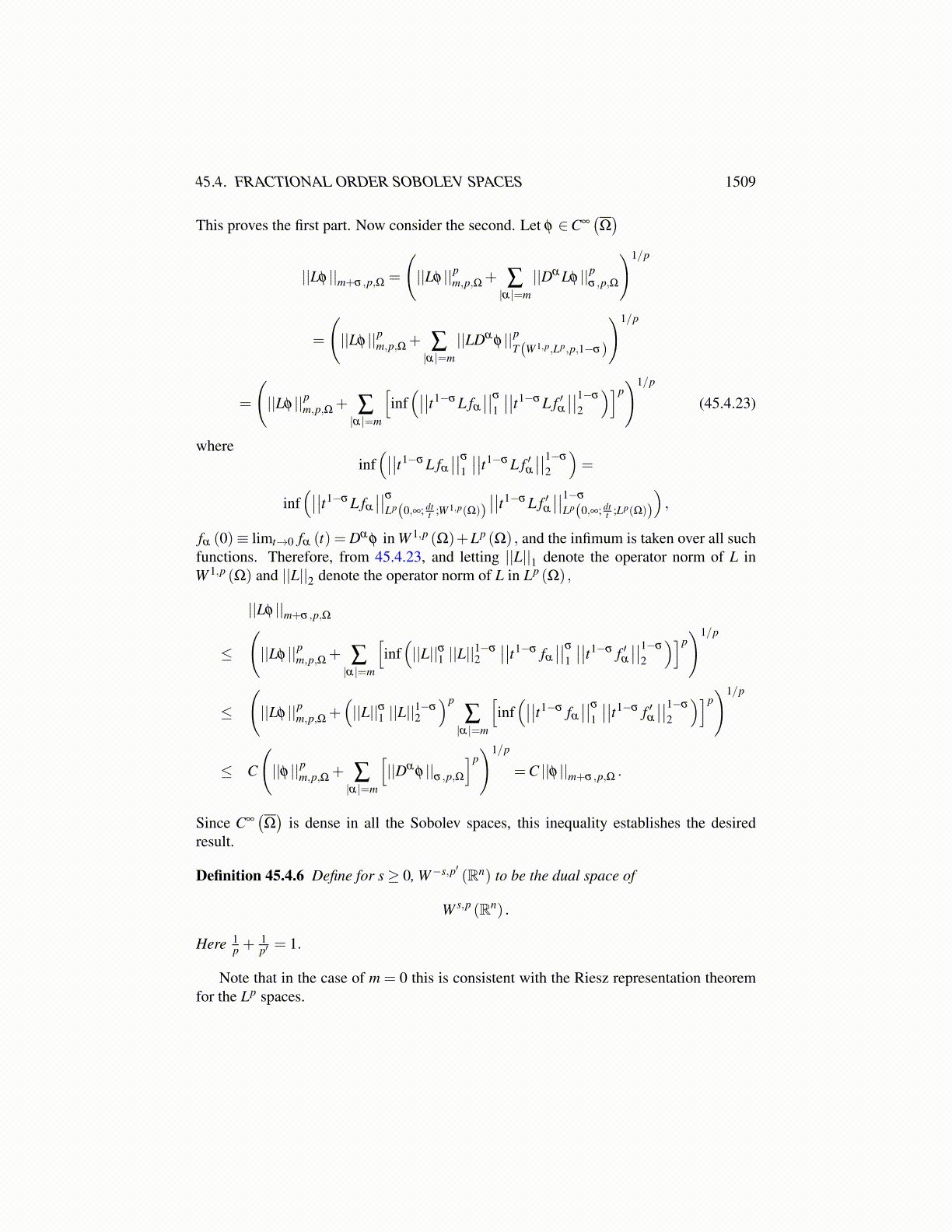
45.4. FRACTIONAL ORDER SOBOLEV SPACES 1509
Theorem 45.4.3 The trace map, γ : W m,p(Rn+
)→W m− 1
p ,p(Rn−1
)is continuous.
Proof: Let f ∈ S, the Schwartz class. Let σ = 1− 1p so that m−
(1p
)= m− 1+σ .
Then from the definition and using f ∈S,
||γ f ||m− 1p ,p,Rn−1 =
(||γ f ||pm−1,p,Rn−1 + ∑
|α|=m−1||Dα
γ f ||p1− 1
p ,p,Rn−1
)1/p
=
(||γ f ||pm−1,p,Rn−1 + ∑
|α|=m−1||γDα f ||p
1− 1p ,p,Rn−1
)1/p
and from Lemma 45.1.4, and the fact that the trace is continuous as a map from W m,p(Rn+
)to W m−1,p
(Rn−1
),
||γ f ||m− 1p ,p,Rn−1 ≤
(C1 || f ||pm,p,Rn
++C2 ∑
|α|=m−1||Dα f ||1,p,Rn
)1/p
≤ C || f ||m,p,Rn+p .
Then using density of S this implies the desired result.With the definition of W s,p (Ω) for s not an integer, here is a generalization of an earlier
theorem.
Theorem 45.4.4 Let h : U → V where U and V are two open sets and suppose h isbilipschitz and that Dα h and Dα h−1 exist and are Lipschitz continuous if |α| ≤ m wherem = 0,1, · · · .and s = m+σ where σ ∈ (0,1) . Then
h∗ : W s,p (V )→W s,p (U)
is continuous, linear, one to one, and has an inverse with the same properties, the inversebeing
(h−1)∗.
Proof: In case m = 0, the conclusion of the theorem is immediate from the generaltheory of trace spaces. Therefore, assume m≥ 1. It follows from the definition that
||h∗u||m+σ ,p,U ≡
[||h∗u||pm,p,U + ∑
|α|=m||Dα (h∗u)||p
σ ,p,U
]1/p
Consider the case when m = 1. Then it is routine to verify that
D jh∗u(x) = u,k (h(x))hk, j (x) .
Let Lk : W 1,p (V )→W 1,p (U) be defined by
Lkv = h∗ (v)hk, j.